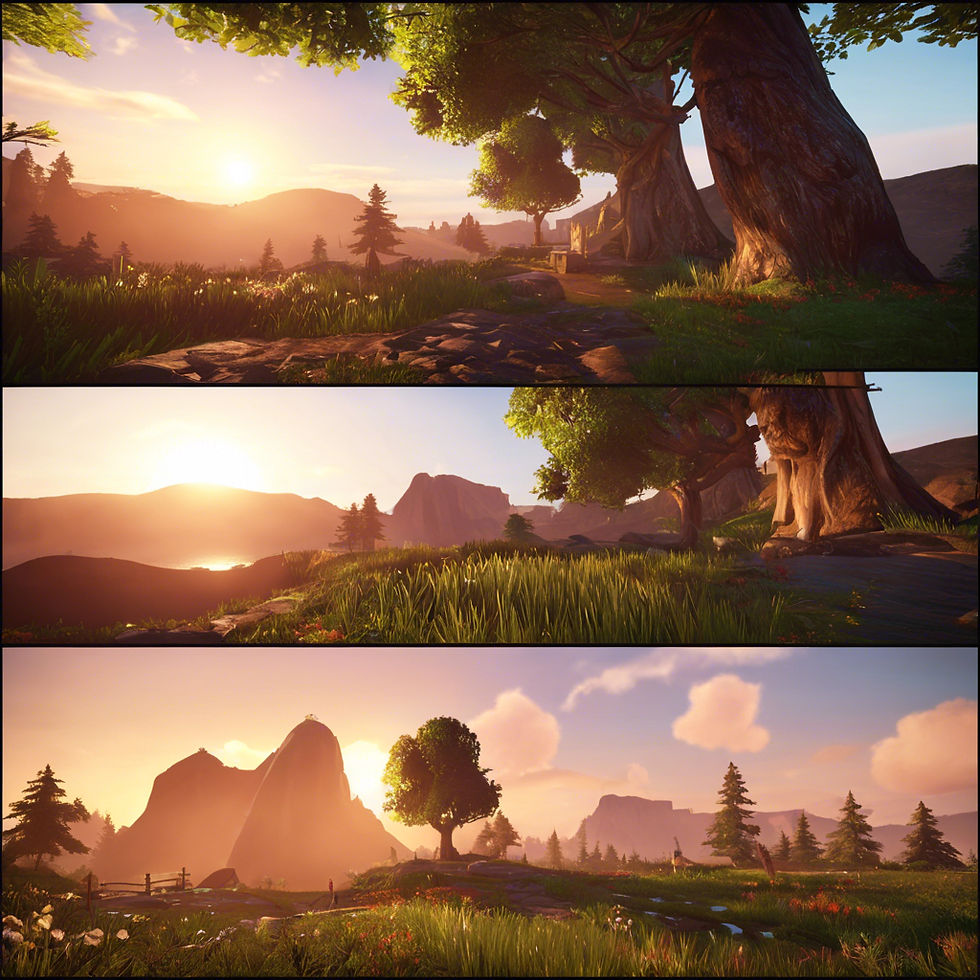The Rise of Free-to-Play Games: A Sustainable Model or Fading Trend?
- Geniuscrate

- Oct 20, 2024
- 4 min read
The gaming landscape has undergone a dramatic shift over the past decade, with the rise of free-to-play (F2P) titles revolutionizing the way we play and pay for games. From breakout hits like Apex Legends to global sensations like Genshin Impact and enduring favorites like Warframe, the free-to-play model has redefined success in the gaming industry. But is this a sustainable model for developers and players alike, or are we witnessing the beginning of its decline?

The Rise of Free-to-Play Games: A Sustainable Model or Fading Trend?
What Defines Free-to-Play Games?
At its core, a free-to-play game offers players the ability to download and play a full game at no upfront cost. Instead of charging a one-time purchase fee or a subscription, developers rely on various monetization methods to generate revenue. This might include battle passes, in-game purchases, and cosmetics—non-essential but appealing content that enhances the player’s experience without affecting core gameplay.
The Surge of Free-to-Play: Why It Works
One of the primary reasons free-to-play games have thrived is the lower barrier to entry. Players can jump into a game with zero risk, which makes the model highly attractive to large audiences. Titles like Apex Legends and Fortnite have reached millions of players within days of their release simply because they were free to access.
The monetization models that fuel free-to-play games have evolved significantly since the early days of the model, now offering players a fairer and more diverse array of ways to support the game. Battle passes have become a popular choice, offering a tiered reward system that keeps players engaged. In-game purchases often focus on cosmetic items, such as skins, character outfits, and weapon designs, which allow players to personalize their experience without giving them a competitive edge.
In games like Warframe, developers have mastered the art of keeping players coming back by introducing regular content updates and fostering a dedicated community. This approach creates a long tail of engagement, meaning players stick around for years rather than moving on after a few months, leading to sustained revenue growth over time.
Key Examples of Successful Free-to-Play Games
Apex Legends: A battle royale game by Respawn Entertainment, Apex Legends exploded in popularity by blending fast-paced, team-based combat with unique character abilities. Its free-to-play model is supported by a battle pass and cosmetics, keeping players hooked with seasonal content updates.
Genshin Impact: This action RPG took the world by storm with its gacha system, where players can unlock new characters and weapons through randomized draws. With an expansive open world and frequent content updates, Genshin Impact monetizes through a combination of in-game purchases and cosmetics, while offering a deeply satisfying free experience.
Warframe: Released in 2013, Warframe has sustained a dedicated player base by consistently introducing new content, storylines, and customization options. Its monetization is primarily driven by cosmetic upgrades and in-game currency, yet players can experience nearly all of its vast content without spending a dime.
The Challenges of Free-to-Play: Is It Sustainable?
While the free-to-play model has seen tremendous success, it comes with its own set of challenges. Maintaining a balance between monetization and player experience is critical—developers must avoid the pay-to-win trap, where in-game purchases give paying players an unfair advantage over those who choose to play for free. Games like Star Wars Battlefront II faced intense backlash for this very issue, forcing a complete overhaul of their monetization systems.
Another challenge is the pressure on developers to continually release new content. Free-to-play games thrive on keeping their player base engaged, which requires regular updates, seasonal events, and expansions. While this keeps players coming back, it can also lead to burnout for development teams who must constantly push to meet high expectations.
Moreover, the free-to-play market is highly competitive. New titles are constantly emerging, making it difficult for any one game to maintain dominance for long. A game that succeeds in 2024 could easily be overshadowed by another by 2025, forcing developers to innovate constantly to stay relevant.
Will Free-to-Play Continue to Dominate?
The future of free-to-play looks bright, but it will likely evolve as the gaming industry continues to grow. Monetization models will become more sophisticated, and studios will need to continue balancing revenue generation with player satisfaction. The rise of subscription services like Xbox Game Pass and PlayStation Plus might offer alternative models, where players have access to large libraries of games for a flat monthly fee, potentially complementing or even replacing some free-to-play offerings.
The key to success in the future will lie in how well developers can build community-driven experiences that feel fair and rewarding for players. Games like Warframe and Genshin Impact have proven that free-to-play can be a sustainable model, but it requires constant innovation, transparency, and a commitment to player engagement.
Conclusion:
Free-to-play games have reshaped the industry, lowering the barrier for players and creating vast new opportunities for developers. While this model is here to stay, its sustainability hinges on continued innovation in monetization and community-building. As long as developers prioritize player experience and fair monetization, free-to-play games will likely continue to dominate, evolving alongside the gaming landscape itself.
GeniusCrate specializes in delivering high-quality 3D modeling and game art outsourcing services, enabling studios to create hyper-realistic environments and intricate character models. Our talented artists utilize industry-leading tools like Maya, Substance Painter, Blender, and Unreal Engine to bring your visions to life. You can check out the brilliant modeling by our talented developers here: Genius Crate Hyper-Realistic Modelling, and here Hyper-Realistic 3D game Models.



Kommentare